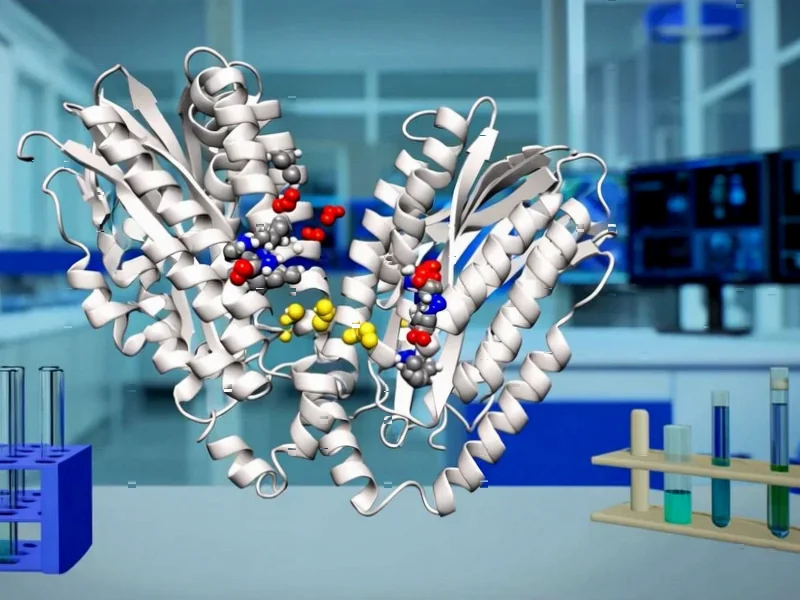According to Nature, researchers have successfully constructed multiple types of metal-peptide frameworks from the same β-pentapeptide by controlling its helical handedness through solvent conditions. The dynamic 12/10-helical β-peptides can switch between right- and left-handed conformations, enabling the creation of distinct framework structures with silver ions that exhibit different pore environments and chiral recognition capabilities. This breakthrough demonstrates how these assembled frameworks can serve as tunable platforms for specific functions, including selectively capturing one enantiomer from a racemic mixture during post-crystallization.
Table of Contents
Understanding the Molecular Engineering Behind Dynamic Frameworks
The key innovation here lies in designing β-peptides with dynamic conformational switching capabilities, which represents a significant advancement beyond traditional static coordination polymers. Unlike conventional metal-organic frameworks that maintain fixed structures, these peptide-based systems can adapt their architecture based on environmental conditions. The researchers cleverly engineered the β-peptides using cyclic β-amino acid residues that undergo rapid helix inversion through ring flip mechanisms, essentially creating molecular switches at the angstrom scale. This level of dynamic control over molecular handedness is unprecedented in framework materials and opens up possibilities for responsive systems that can adapt to different chemical environments or stimuli.
Critical Analysis of Practical Implementation Challenges
While the research demonstrates impressive control over chiral environments, several practical challenges remain before these materials can see widespread application. The crystallization process using the triple-layering method appears highly sensitive to solvent conditions and concentrations, which could limit scalability and reproducibility in industrial settings. The reliance on silver ions also raises concerns about material stability and cost, particularly for large-scale separation applications. Additionally, the pore sizes ranging from approximately 7 to 26 ångströms might be too restrictive for many pharmaceutical compounds or industrial chemicals. The solvent-dependent nature of the helical switching also suggests potential limitations in non-polar environments where protic solvents cannot be used.
Industry Implications for Separation and Catalysis
This technology could revolutionize chiral separation processes in pharmaceutical manufacturing, where current methods for separating enantiomers remain expensive and inefficient. The demonstrated ability to selectively capture one enantiomer from racemic mixtures suggests potential applications in purifying chiral drugs, which constitute a significant portion of modern pharmaceuticals. Beyond separation science, these frameworks could enable new types of asymmetric catalysis where the chiral environment can be tuned for specific reactions. The modular nature of peptide design also suggests that different functional moieties could be incorporated to create frameworks tailored for specific molecular recognition tasks, potentially impacting sensor development and molecular storage applications.
Realistic Outlook and Development Timeline
The transition from laboratory demonstration to practical application will likely require 5-10 years of development, focusing on improving framework stability, reducing metal costs, and developing more robust synthesis methods. The most immediate applications will probably emerge in high-value pharmaceutical separations where current technologies fall short. However, the true potential lies in creating adaptive materials that can switch between different chiral environments on demand, enabling smart separation systems that could separate multiple enantiomer pairs using the same material under different conditions. As researchers develop similar frameworks with more abundant metals and improved stability characteristics, we may see these dynamic peptide frameworks become important tools in both analytical chemistry and industrial processes.



